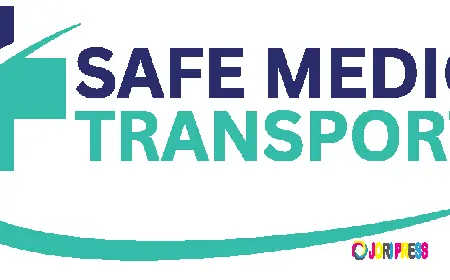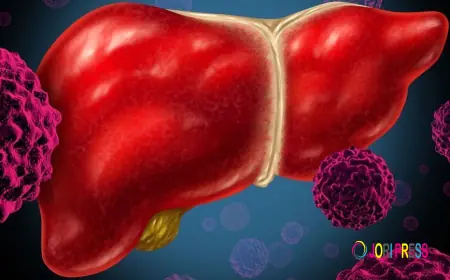Inside Ham’s Shs 180 billion masterplan for transformation of Nakivubo channel


It has been billed as the game-changer of Kampala’s landscape.
Businessman Hamis Kiggundu, popularly known as Ham, intends to turn around the Nakivubo drainage system from a foul, crime-ridden channel to a city’s lifeline in a $50m [Shs 180bn] project set to redefine the city, writes David Lumu.
For decades, the Nakivubo drainage channel has been a paradox at the heart of Kampala. It is a vital artery designed to carry stormwater out of the city to Lake Victoria, yet it has become a clogged, open sore—a repository for plastic waste, raw sewage and industrial effluent whose stench and frequent floods have plagued the lives of thousands.
In fact, over the years, many lives have been lost in the flooding of the channel. But now, a bold $50 million private initiative, approved by President Museveni and spearheaded by businessman Hamis Kiggundu, promises not just to cover this eyesore but to utterly transform it into an engine of urban renewal, public health and economic growth over the next five years.
This is not merely a construction project; it is a vision to surgically remove a symbol of urban decay and replace it with a beacon of modern Kampala.
CONTEXT
For Sarah Namirimu, a vegetable dealer in Owino market, the channel’s current state dictates her daily reality.
“When it rains heavily, it is disaster. We have to move our stock to higher ground, hoping the water doesn’t ruin everything. But that comes with a huge cost,” she explains.
“The foul smell is constant. We keep our goods covered, but the stench still come in. It’s unhealthy and chases away customers.”
Ham’s project pledges to change this narrative entirely. He has already embarked on a comprehensive desilting operation to restore the channel’s original stormwater capacity. In the past few weeks, engineers have strengthened the channel’s walls and base and plans are underway to finally cover it with a reinforced concrete deck.
This single act will eliminate the open sewer, instantly eradicating the primary source of petty crime, foul odours and disease vectors like malaria and cholera that have burdened city dwellers for years.
“The immediate impact is on public health,” explains Amanda Ngabirano, an urban planning expert.
“By covering the channel, Ham is removing a massive breeding ground for pathogens. He is reducing flood-related disasters, which means fewer waterborne disease outbreaks and less property damage. This is a fundamental restoration of the city dwellers’ right to a clean and healthy living environment.”
Breathing Life into the City’s Lungs and Economy
The transformation, however, goes far below and above the surface. The ecological benefits are profound. A clean, efficient, and protected drainage system means that during heavy rains, water will flow freely into Lake Victoria without first washing tonnes of plastic and solid waste into the ecosystem.
This will significantly reduce the pollution load on the lake, protecting aquatic life and improving water quality. Above, where the waste once festered, a new landscape will emerge. Ham’s $50 million investment will fund the construction of modern commercial properties—potentially including office blocks, retail spaces, and clean public walkways.
This does more than just beautify the area; it injects a powerful dose of economic adrenaline. In fact, Ham is expected to provide permanent employment to at least 5,000 Ugandans on the project maintenance.
“The project is a catalyst,” says economic analyst Fred Muhumuza.
“The construction phase alone will create hundreds, if not thousands, of jobs for engineers, labourers, masons, and suppliers. Once completed, the new developments will host businesses, creating permanent employment opportunities and transforming the zone from a neglected bypass into a vibrant commercial hub. It increases property values, boosts municipal revenues through taxes, and completely revitalises the urban fabric.”
A Model for the Future
Ham Kiggundu’s approach represents a innovative public-private partnership model where the private sector assumes the financial risk and operational burden for a public good. In return, he secures the rights to commercially develop the reclaimed space, turning a civic problem into a viable business venture.
For the city dweller, the win is clear: a free infrastructure upgrade that the government may not have had the immediate resources to undertake. For Ham, it is a long-term investment.
For Kampala, it sets a precedent for how other chronic urban challenges—from waste management to road construction—might be tackled through collaborative, imaginative thinking. Over the next five years, as the dredgers move in and the skyline begins to change, the lives of Kampalans like Namirimu are set for a dramatic upgrade.
The fear of floods will recede, the air will become easier to breathe, and the hum of commerce will replace the stagnation of decay. The Nakivubo channel, once a definition of urban failure, is on its way to becoming a symbol of Kampala’s resilient and ambitious future.
HAM’S PROJECT AT A GLANCE
The Nakivubo channel is the main stormwater drainage channel for the city of Kampala. More than ninety-five percent (95%) of the developed central urban area of the city drains into this channel.
The main channel starts from springs located between Bat Valley Wandegeya and Makerere Kivulu to the northwest of the city, runs southwards for some three kilometres to Clocktower Roundabout, then turns eastwards for approximately five kilometres, through the Industrial Area of Kampala before entering the swamp which leads to Lake Victoria, between Port Bell and Ggaba.
The existing channel is approximately 9 kilometres long, with a catchment area of approximately 27km. The Nakivubo channel has not been adequately maintained or repaired. Much silting has occurred and there are numerous areas where flow is severely restricted.
There has also been increase in development within the catchment, resulting in greatly increased stormwater runoff and peak flows. All these have resulted in reducing the capacity of the channel and causing frequent flooding of adjacent areas. The problem has created the need for the rehabilitation of the channel so that it can accommodate the stormwater volume.
Ham’s proposed Nakivubo Channel redevelopment includes conducting of an Environmental Impact Assessment (ELA) to examine, analyze and assess the environmental soundness and sustainability of the proposed project. His vision is to reduce flooding, enhanced aesthetics by planting of trees, channel alignment, channel lining, pedestrian footbridges, vehicular culverts and bridges as well as improvement of traffic circulation.
He also intends to reduce economic impacts of flooding on commercial activities by improving access for pedestrians during rainstorm events and increasing property values in the vicinity of the channel.
The rehabilitation of Nakivubo channel will have minimum negative impact on the ecology of the immediate area alongside the channel and in areas of raw material extraction. The various impacts include effects on flora and fauna, soil compaction, soil erosion, alteration of landscape, decreased aesthetics and other ecological risks during construction of the project.
Ham’s environmental impact assessment notes will appropriate mitigation measures which will address the environmental impacts during and following implementation of the project.
It is worth noting that most of the adverse environmental impacts, during the construction phase, will be short-term. KCCA report on Nakivubo channel upgrade As recent as 2022, KCCA released a scathing report about the state of the Nakivubo channel. In the report, it was noted that more than 95% of the presently developed central urban area of Kampala drains into the Nakivubo channel, a natural drainage channel some nine kilometers in length which discharges into Murchison Bay, Lake Victoria.
The total catchment area for the Nakivubo channel is approximately 27km. Presently, and owing to the present inadequate carrying capacity of the channel, serious flooding of certain parts of Kampala occur several times a year, causing considerable disruption to traffic flows, flooding of industrial and other facilities and consequent economic loss.
The present condition of the Nakivubo drainage channel prevents it from performing as intended. The channel is heavily silted and there is an abundance of debris along most sections, preventing it from operating at its maximum carrying capacity.
Parts of the channel have been washed away. Several stretches of the channel have no definite cross-section due to erosion of the side banks. The channel is crossed by several water and sewerage pipes, which trap debris carried down the channel, thereby reducing the channel’s already limited discharge carrying capacity.
The channel is generally considered to be in a poor state, owing to lack of proper maintenance over the last several years. There is, therefore, a need to redevelop the channel, in order to correct existing deficiencies and increase its flow-carrying capacity, as well as to make provisions for effective operation and maintenance following its completion.
HOW NAKIVUBO CHANNEL TRANSFORMATION WILL BENEFIT KAMPALA CITY DWELLERS
Where others saw a problem with Nakivubo channel, businessman Ham saw a vision. His ambitious $50 million project to cover the channel isn’t just about hiding a drain; it’s about following a proven blueprint to transform the very heart of the city.
Before anything, the critical work is happening underground. He intends to replace the clogged channel with a massive, state-of-the-art box culvert. This reinforced concrete tunnel, wide and deep enough to handle even the most extreme storms, is being designed with one non-negotiable rule: “No Adverse Impact.”
So, the usual nightmare of flooding in Kampala and downtown areas is almost over. Businesses will be permanently protected. Traffic, once paralyzed by flooded roads, will now flow smoothly, saving commuters hours and boosting productivity.
Meanwhile, the surface of the Nakivubo channel will become a greenway. This will not just be a simple concrete lid. It will be a lush, landscaped park that winds through the city. The benefits for Kampalans are that families will picnic on lawns that were once a health hazard. Children will play football on fields that were previously unthinkable.
Joggers and cyclists will use new paths, and the city will enjoy its first major, centrally-located public park that will improve air quality and well-being for all. What’s more, environmental and economic benefits will be intertwined.
The new culvert will have dedicated, accessible points for maintenance, ensuring it never clogs. The greenway will spark an urban renaissance. So, the foul odour will be gone, reducing respiratory illnesses and improving the quality of life for thousands in the channel’s neighbouring communities. But the biggest change will be economic.
The land that was once a toxic no-go zone will now be a prime real estate. New businesses, cafes, galleries, gyms will be springing up along the greenway, creating thousands of jobs. What’s more, property values in the area will skyrocket.
So, whereas Ham’s investment will provide the capital and drive, the project will succeed by adopting a multi-agency coordination, including KCCA, the ministry of Water and Environment, Nema and private engineers to meet all technical and environmental standards.
The Nakivubo channel will no longer be a drain on the city’s resources but a source of civic pride and economic energy. It will show Kampalans that their city can be both functional and beautiful, that a piece of infrastructure can also be a park, and that a problem once thought intractable can be solved with vision and world-class execution.
Kampala will take its first, transformative step towards a cleaner, safer, and more prosperous future.
What's Your Reaction?
 Like
0
Like
0
 Dislike
0
Dislike
0
 Love
0
Love
0
 Funny
0
Funny
0
 Angry
0
Angry
0
 Sad
0
Sad
0
 Wow
0
Wow
0















































